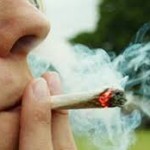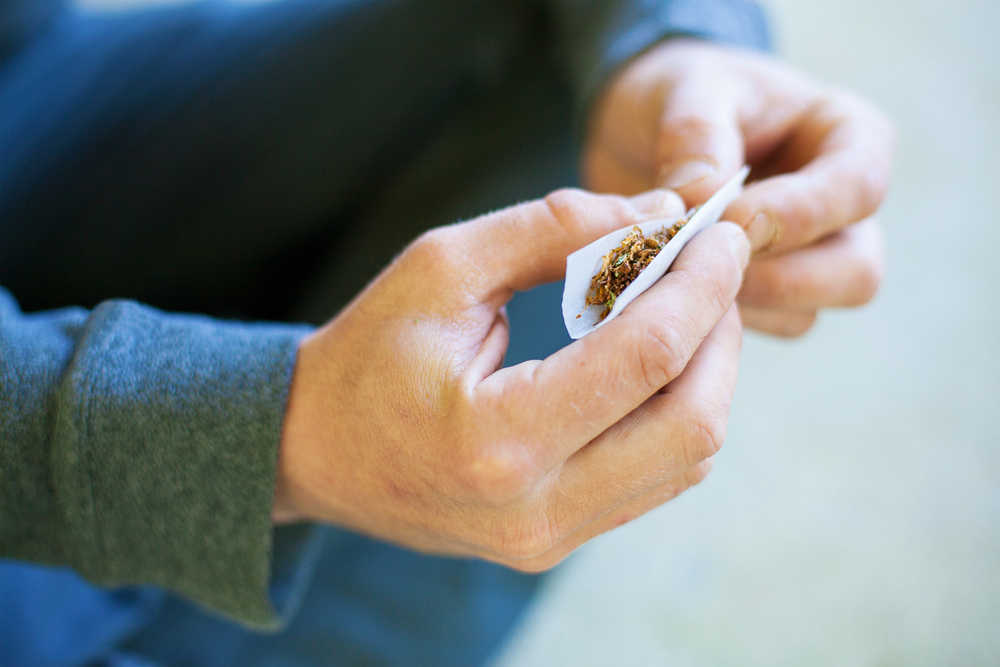
Cannabis is the most commonly used illicit drug in the UK and for several years research has aimed to examine the link between cannabis use and psychosis or psychotic symptoms. We’ve blogged about cannabis and psychosis a few times on the Mental Elf.
So far however, relatively little attention has been paid to the possible link between cannabis use and symptoms of mania.
As is the case with much mental health-substance use research, untangling the possible relationship between the two can be tricky; it may be that cannabis causes symptoms of mania, that people with bipolar disorder use cannabis to self-medicate (i.e. mania causes cannabis use), or that both mania and cannabis use share common underlying risk factors (Strakowski and Delbello 2000).
A recent review aimed to shed some light on this by attempting to answer the two following questions:
- Does cannabis use lead to increased occurrence of manic symptoms or manic episodes in individuals with pre-existing bipolar disorder?
- Does cannabis use increase the risk of onset of mania symptoms in those without pre-existing bipolar disorder?

Establishing causal links in healthcare is notoriously difficult.
Methods
To answer the two research questions the authors conducted a systematic review. They searched several databases and Google Scholar, inspected reference lists and hand searched a selection of journals to locate appropriate papers.
Six articles met the inclusion criteria with a total sample of 14,918 participants. Three of the studies included people with a diagnosis of bipolar disorder and were selected to address question one; whilst the studies selected to address question two (n = 3) included either a community cohort (n = 2) or a sample of high risk adolescents (n = 1).
The authors used the Cochrane guidelines to assess bias and for each study there was a high risk of bias across 3 or more of the 7 domains, most often relating to selection and attrition bias.
Results
Does cannabis use lead to increased occurrence of manic symptoms or manic episodes in individuals with pre-existing bipolar disorder?
The results of the three studies were summarised narratively as it was not possible to combine the quantitative data to conduct statistical analyses:
- Strakowski et al 2000: The amount of time spent using cannabis was significantly associated with the amount of time with symptoms of mania (R = 0.42, p < .01)
- Baethge et al 2008: When comparing quarters of the year (3-month blocks), cannabis use predicted manic symptoms or episodes (RC = 0.111; 95% CI = 0.054 to 0.168; z score = 3.80; p < 0.001). Mania did not occur in the previous quarter to substance use; however manic symptoms and cannabis use did occur in the same quarter (possibly suggesting self-medication)
- van Rossum et al 2009: Cannabis use was significantly associated with symptoms of mania (B = 0.15, CI: 0.06 to 0.24; p < 0.001); although this should be interpreted cautiously it relates to ‘any’ cannabis use regardless of duration, frequency or level of dependence
Does cannabis use increase the risk of onset of mania symptoms in those without pre-existing bipolar disorder?
This question was also summarised narratively, although two of the studies reported odds-ratios which were combined by the authors using meta-analysis:
- Tijssen et al 2010: Those reporting cannabis use were four times more likely to develop symptoms of mania (OR: 4.26; 95% CI 1.42 to 12.76; p < 0.01)
- Henquet et al 2006: There was a significant association between cannabis use and mania symptoms after controlling for socio-demographic variables, other drug and alcohol use, neuroticism and baseline mania and psychosis symptoms. There was also a dose response where the strength of the association was almost double for those using cannabis 3-4 days per week (OR: 6.94; 95% CI 2.00 to 24.06) compared to 1-2 days per week (OR: 3.78; 95% CI 1.59 to 8.97)
- Duffy et al 2012: Having a substance use disorder increased the risk of developing bipolar disorder (Hazard Ratio: 3.403; p <0.01), but having bipolar disorder also increased the risk of developing a substance use problem (Hazard Ratio: 3.066; p < 0.01)
- The meta-analysis included the first 2 studies and the pooled effect size for the association between cannabis use and mania was 2.97 (95% CI 1.80 to 4.90)

The researchers could only pool results from 2 of the studies they found in a meta-analysis.
Conclusion
The results of the review suggest that cannabis use may trigger symptoms of mania in those without a diagnosis of bipolar disorder (and exacerbate symptoms for those with one), but the small number of heterogeneous studies included make it impossible to come to any definitive conclusions at this stage.
For those without a diagnosis, the meta-analysis suggests that cannabis use is associated with a 3-fold increased risk of manic symptoms. The results of the studies included in the review appear to be consistent, however it is important to bear in mind that there are not a lot of them and they are not robust enough to allow us to state the conclusions with confidence. As in many areas of research, combining the results of the individual studies was almost impossible, primarily due to the range of assessment measures and statistics used.
Furthermore it appears that the authors did not search for any unpublished data, so it may be that there are non-significant results out there that are not included in the review and may be important when considering the questions.
More research is clearly needed as the implications could be of huge significance, particularly for the treatment and possibly the prevention of symptoms of mania and bipolar disorder, if some of the results are replicated in the future.

This review highlights the need for further high quality studies to investigate the links between cannabis use and mania.
Links
Gibbs M, Winsper C, Marwaha S, Gilbert E, Broome M, Singh, SP. Cannabis use and mania symptoms: A systematic review. Journal of affective disorders. 2015; 171: 39-47.
Strakowski SM, Delbello MP. The co-occurrence of bipolar and substance use disorders. Clin. Psychol. Rev. 2000; 20: 191–206
Strakowski SM, Delbello MP, Fleck DE, Arndt S. The impact of substance abuse on the course of bipolar disorder. Biol. Psychiatry. 2000; 48: 477–485
Baethge C, Hennen J, Khalsa HMK, Salvatore P, Tohen M, Baldessarini RJ. Sequencing of substance use and affective morbidity in 166 first‐episode bipolar I disorder patients. Bipolar Disord. 2008; 10: 738–741
Van Rossum I, Boomsma M, Tenback D, Reed C, Van Os J. Does cannabis use affect treatment outcome in bipolar disorder? A longitudinal analysis. J. Nerv. Ment. Dis. 2009; 197: 35–40
Tijssen MJ, Van Os J, Wittchen HU, Lieb R, Beesdo K, Wichers M. Risk factors predicting onset and persistence of subthreshold expression of bipolar psychopathology among youth from the community. Acta Psychiatr. Scand. 2010; 122: 255–266
Henquet C, Krabbendam L, De Graaf R, Ten Have M, Van Os J. Cannabis use and expression of mania in the general population. J. Affect. Disord. 2006; 95: 103–110
Duffy A, Horrocks J, Milin R, Doucette S, Persson G, Grof P. Adolescent substance use disorder during the early stages of bipolar disorder: a prospective high-risk study. J. Affect. Disord. 2012


Cannabis and mania: what’s the link?: Kathryn Walsh summarises a systematic review which finds that cannabis u… http://t.co/aUpBhKZP7Z
@Mental_Elf good to look at this relationship, although the studies are out of date as the type of cannabis has changed over recent years
Few studies but all seem to suggest a link RT @Mental_Elf: Cannabis and mania: what’s the link? http://t.co/vA5wZrYWa8”
Relationships of Cannabis to Mania http://t.co/vjiQJbajEn
Cannabis and mania: what’s the link? http://t.co/1bLfze5uof
Nice review of the evidence that cannabis use might exacerbate/increase risk of mania http://t.co/YMJIPrDzxf @Mental_Elf
Today @kathryn_amy87 on SR which finds that cannabis use may exacerbate symptoms of mania in ppl w/ bipolar disorder http://t.co/3v66JvYUEv
@Mental_Elf @kathryn_amy87 what kind of cannabis? Most likely sat
The Mental Elf liked this on Facebook.
Morning @matthewrbroome Pls comment on our blog about your SR on #cannabis and #mania http://t.co/3v66JvYUEv
@Mental_Elf @matthewrbroome ahh thementalelf I followed you because your name is fabulous
Cannabis and mania http://t.co/xoS2qnRIDs
Many thanks for the very clear overview of our paper! Important topic given prevalence of cannabis use in young people and do hope there are more studies for subsequent evidence syntheses
RT @Mental_Elf: Cannabis and mania: what’s the link? http://t.co/yhDiGFigEO
Cannabis and mania: what’s the link? http://t.co/wYpFZOp92e via @feedly
SR suggests that cannabis use may trigger symptoms of mania in those without a diagnosis of bipolar disorder http://t.co/3v66JvYUEv
Cannabis and mania: what’s the link? http://t.co/O00p3Xjnxa via @sharethis
Cannabis and mania: what’s the link?
http://t.co/P1BejXFOHY
Mental Elf: Cannabis and mania: what’s the link? http://t.co/2qZgdxhBNH
Post on recent publication by network member @matthewrbroome on cannabis use and mania symptoms http://t.co/gkWAoJbCEU
If you care for people with bipolar disorder who use cannabis, you should read this: http://t.co/3v66JvYUEv
Don’t miss – Cannabis and mania: what’s the link? http://t.co/3v66JvYUEv
Princess Sunshyne liked this on Facebook.
Carina Kirby liked this on Facebook.
Shelley Louise liked this on Facebook.
#Cannabis and #mania: what’s the link? http://t.co/aC6l8DDHSF